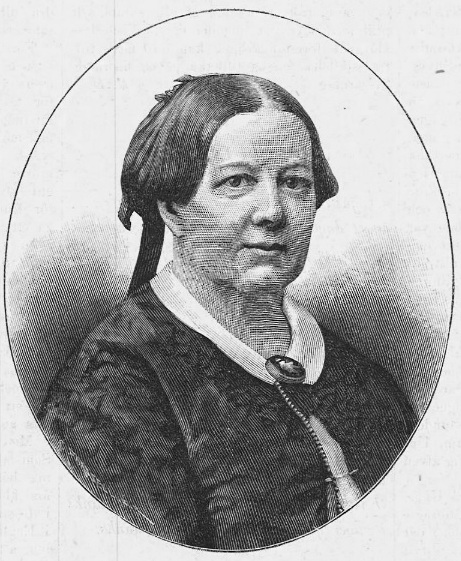Frederique Hammarstedt on:
[Wikipedia]
[Google]
[Amazon]
 Fredrique Hammarstedt (1823-1901) was a Swedish educator.
She was born to the tobacco merchan Teodor Benjamin Unge (d. 1827) and Antoinetta Lovisa Hård af Segerstad. She was one of the first students of the
Fredrique Hammarstedt (1823-1901) was a Swedish educator.
She was born to the tobacco merchan Teodor Benjamin Unge (d. 1827) and Antoinetta Lovisa Hård af Segerstad. She was one of the first students of the Idun, nr 33, 1922
/ref>
Idun. Nummer 35. 1892
Hammarstedt Fredrique, samling
* Gudrun Spetze
Lärarnas historia. De enskilda skolorna under 1800-talet.
Idun, nr 33, 1922
{{DEFAULTSORT:Hammarstedt, Fredrique 1823 births 19th-century Swedish educators 1901 deaths Swedish governesses 19th-century Swedish women educators
 Fredrique Hammarstedt (1823-1901) was a Swedish educator.
She was born to the tobacco merchan Teodor Benjamin Unge (d. 1827) and Antoinetta Lovisa Hård af Segerstad. She was one of the first students of the
Fredrique Hammarstedt (1823-1901) was a Swedish educator.
She was born to the tobacco merchan Teodor Benjamin Unge (d. 1827) and Antoinetta Lovisa Hård af Segerstad. She was one of the first students of the Wallinska skolan
Wallinska skolan (Wallin School) or Wallinska flickskolan (Wallin Girls' School), was a girls' school in Stockholm, Sweden. Active from 1831 to 1939, it was one of the first five schools in Sweden to offer serious academic education and seconda ...
. As an adult she worked as a governess and then as a teacher in the school of Cecilia Fryxell
Ulrica Cecilia Fryxell (14 August 1806 – 6 May 1883) was a Swedish educator and principal, regarded as a pioneer within the education of girls in Sweden. The girls' school in Sweden from the mid-19th century onward was influenced by her methods ...
.
She was the founder and principal of the girls' school Hammarstedtska skolan
Hammarstedtska skolan (Hammarstedt School), also known as Hammarstedtska flickpensionen (Hammarstedt Girl's Pension) and Hammarstedtska pensionen (Hammarstedt Pension) was a Swedish Girls' school, active for most of the 19th century in Stockholm. I ...
in Stockholm in 1855-1881. She took over the school from Sophia Posse
Sophia means "wisdom" in Greek. It may refer to:
*Sophia (wisdom)
*Sophia (Gnosticism)
*Sophia (given name)
Places
*Niulakita or Sophia, an island of Tuvalu
*Sophia, Georgetown, a ward of Georgetown, Guyana
*Sophia, North Carolina, an unincorpor ...
and refounded it as her own. Her school was one of the most fashionable institutions for women's education in the Swedish capital during her life time, attracting aristocratic students from both Sweden and Finland, and as its principal she was an important and well known public figure at the time. She also managed a charity soup kitchen in the school dining room.
Fredrique Hammarstedt was a successful celebrity businesswoman, who progressively developed her school to become less of a finishing school and more of a serious educational institution. She was appreciated by the parents of her students for her conservative views, such as her strict adherence to the State Church after the introduction of freedom of religion. In 1855, she married the clergyman Gustaf Hammarstedt, vicar of the Danviken Parish, with whom she had six daughters, but because of their professions, the couple lived in separated residences. However, despite her de facto independent life, she maintained a theoretically conservative world view. An anecdote is known about the contrast between her conservative views and the fact that she lived the life of an independent woman in practice. According to this, she once expressed her dislike of the women's movement, and was contradicted by one of her former students: "And yet, I know of no other woman as emancipated as aunt. ..Well, to reside in another place than your husband, to continue living there almost the entire marriage and to support yourself and your children by yourself - surely that is rather emancipated!"/ref>
References
Idun. Nummer 35. 1892
Hammarstedt Fredrique, samling
* Gudrun Spetze
Lärarnas historia. De enskilda skolorna under 1800-talet.
Idun, nr 33, 1922
{{DEFAULTSORT:Hammarstedt, Fredrique 1823 births 19th-century Swedish educators 1901 deaths Swedish governesses 19th-century Swedish women educators